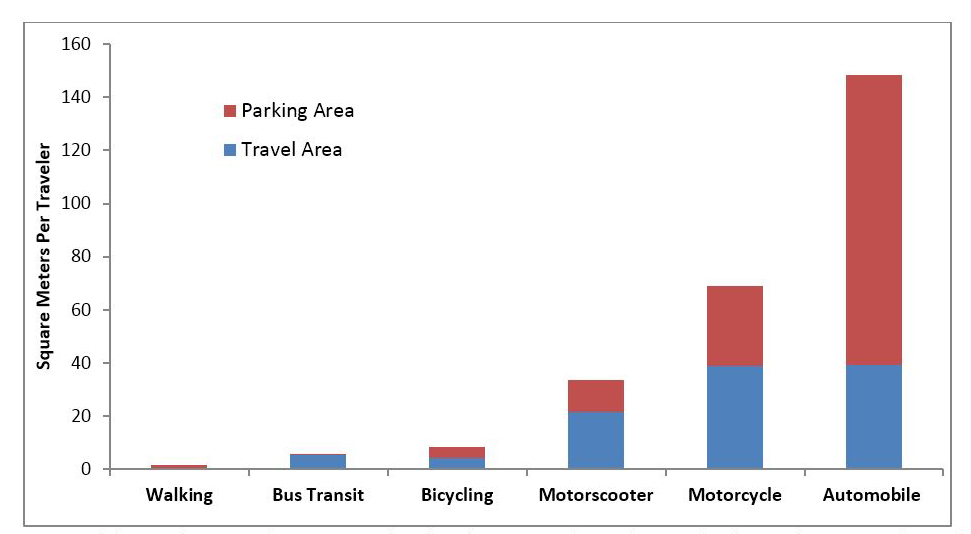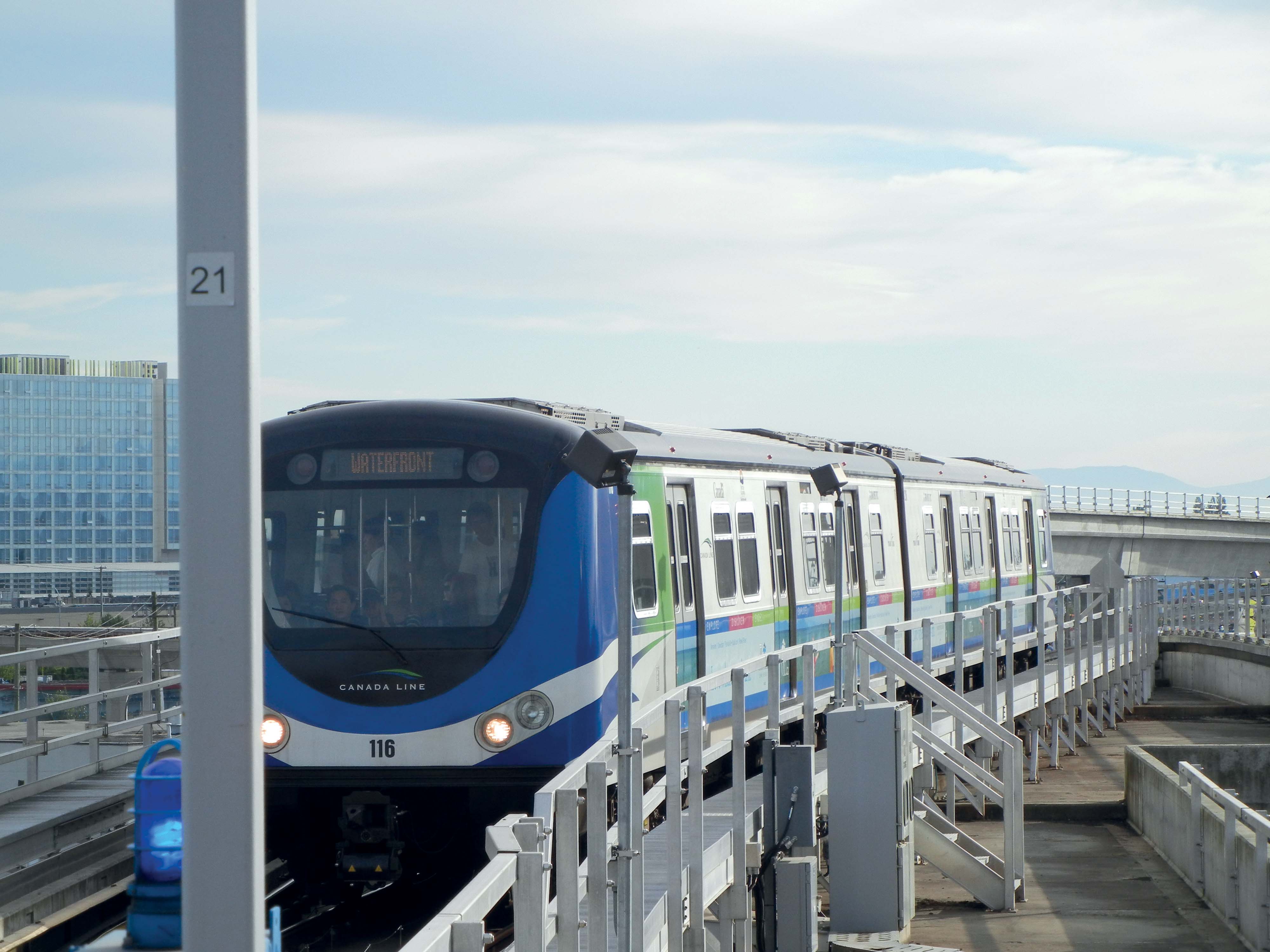
A new report says car-centric planning leads to inefficient cities and divided communities as lead author Todd Litman explains.
Between 1950 and 2050 the human population will have approximately quadrupled and shifted from 80% rural to nearly 80% urban; by the middle of this century the United Nations predicts an additional 2.2 billion urban residents in developing countries than there are today. How these cities grow has huge economic, social and environmental impacts and implementing proper policies can create a legacy of sustainable development for future generations.
A new report, Analysis of Public Policies that Unintentionally Encourage and Subsidize Sprawl, analyses the costs and benefits of various development patterns. Written for the New Climate Economy by the Victoria Transport Policy Institute in partnership with the London School of Economics’ Cities Program, the report provides practical guidance and ways to optimise urban expansion.
This study defines sprawl as dispersed, automobile-oriented, urban fringe development; while the opposite is called ‘smart growth’ and compares the physical and economic effects of these two development patterns. Sprawl has two primary impacts: it enlarges per capita land consumption and increases the distances between activities, which in turn increases per capita infrastructure requirements and the distances travelled. These impacts have economic effects including reduced accessibility and opportunity for non-drivers as well as increased costs for providing utilities or government services and transport (including vehicle expenses, travel time, congestion, accidents and emissions). What the latest study does is to integrate all such considerations into one analysis framework.
It divides US cities into five categories from smartest growth to the most sprawled, and estimates that the cost of providing infrastructure and public services is 10-40% higher because of the bigger distances between homes, businesses, services and jobs. Using real world data the study calculates that in the most sprawled cities the average annual per capita spend on public infrastructure is $750, 50% more than in cities with the smartest growth.
Sprawl typically increases per capita automobile ownership and use by 20-50% and reduces walking, cycling and public transit use by 40-80%, compared with smart growth communities. Higher automobile travel increases direct costs to users, such as vehicle and fuel expenses, and external costs including road building/maintenance and parking facilities, congestion, accident risk and pollution, as can be seen from the graph.
Accidents
Smart growth communities tend to have far lower traffic fatality rates than their sprawled counterparts, providing huge societal benefits and savings. Traffic fatalities per 100,000 residents typically average 20-30 in developing mations’ cities and 10-20 in affluent automobile-dependent cities compared with 5-10 in affluent compact cities and just 1.5-3 in affluent, compact cities with strong transportation demand management programs. In addition, by increasing daily walking, smart growth tends to increase public fitness and health, which significantly reduces healthcare costs associated with physical inactivity and obesity.The study estimates sprawl costs the US economy in excess of $1trillion annually, or more than $3,000 per capita and that Americans in sprawled communities directly bear $625billion in extra costs while imposing more than $400billion in additional external costs. This is economically inefficient, wasting resources and imposing costs on people who do not benefit from sprawl. By comparison, smart growth can provide large savings; directly benefiting those living in compact, multimodal communities, and indirectly benefiting society overall.
Beyond human densities, the report also analyses the optimal vehicle densities as motor vehicles require far more road and parking space than other travel modes (see graph). On average automobiles require 20-60m2 of road space plus and, according to several studies based on satellite surveys, two to six off-street parking spaces, totalling 80 to 240m2 in total - meaning automobiles typically use more land than an urban resident’s house. This increased need for roads and parking facilitiesincreases development costs, noise and air pollution while also stimulating sprawl, creating traffic and parking congestion and displacing green space. As a result, efforts to increase urban densities, liveability and transport system efficiencies requires limiting private automobiles in a city to a number the road system can efficiently accommodate.
Sprawl tends to disproportionately harm physically and economically disadvantaged people by reducing their ability to use affordable travel modes such as walking, cycling and public transit. With sprawled development, affluent households often move to isolated, automobile-dependent areas leaving poverty concentrated in urban areas which can exacerbate problems like crime and social exclusion. In contrast, research indicates that, all else being equity, crime rates tend to be lower in compact, mixed, multimodal neighbourhoods due to increased passive surveillance (more ‘eyes on the street’) and improved economic opportunity for at-risk residents by improving their ability to access a wider range of schools, jobs, stores and other public services. This study also indicates that smart growth tends to increase economic productivity by improving accessibility which provides agglomeration efficiencies, reducing infrastructure and transportation costs, and reducing the need to import vehicle fuel. These factors are particularly important in developing countries where most urban households cannot afford a car and where resource efficiency needs to be favoured.
This study identifies policy distortions that encourage sprawl along with suggested reforms. For example, cities can improve and encourage more compact housing options by reducing or eliminating minimum parking requirements and cutting development and utility fees for compact infill development. They can also apply multimodal transport planning, charge efficient prices for road-use and parking facilities while also correcting tax policies such as parking tax benefits that unintentionally favour sprawl and automobile travel.
Optimal density
To determine the optimal densities in specific situations, the study divides cities into three categories:Unconstrained cities - surrounded by abundant lower-value land allowing significant expansion. Such cities should maintain strong downtowns surrounded by higher-density neighbourhoods with diverse, affordable housing options. The use of private automobiles should be discouraged under urban-peak conditions by applying transport pricing reforms including complete streets policies (adequate sidewalks, crosswalks, bike lanes and bus stops), transit priority features on major arterials and efficient parking management. Semi-constrained cities have a limited ability to expand. Beyond maintaining strong downtowns surrounded by higher-density neighbourhoods, such cities should discourage car ownership with policies requiring vehicle owners to provide off-street parking, pricing on-street parking (with strong enforcement), roadway design that favours walking, cycling and public transit along with road pricing to limit vehicle travel to the road system’s capacity.
Constrained cities cannot significantly expand, so population and economic growth requires increased densities. In such cities few households will own private cars and require policies to maximise liveability in dense neighbourhoods, including streets that accommodate diverse activities and building designs that maximise fresh air. Transport policies must favour space-efficient modes (walking, cycling and public transit) along with restrictions on motor vehicle ownership and use, particularly those with internal combustion engines.
This analysis indicates most smart growth benefits can be achieved by shifts from low density (fewer than 30 residents per hectare) to moderate (50-80 residents per hectare) which is typical of affluent European cities. The additional benefits from higher densities are likely to be modest, although with good planning high density neighbourhoods can be very liveable as cities such as Singapore and Seoul demonstrate.
Space-efficient
As motor vehicles are very space-intensive, limiting urban automobile ownership and managing roads and parking are important factors for creating efficient and liveable cities. This requires improvements to space-efficient modes (walking, cycling, ridesharing and public transit), accessible, multimodal development and incentives for travellers to use the most efficient mode for each trip to minimise the need to drive. Since a bus lane can carry far more passengers than a general traffic lane, an efficient city provides bus lanes on most urban corridors.While the study recognises the benefits of sprawl, these mostly direct benefits to residents of those sprawl community who have private lawns and gardens, more privacy and quiet; sprawl provides no significant benefits to non-residents to offset the substantial external costs that sprawl dwellers impose on society. Market-based solutions such as reduced and more flexible off-street parking requirements, the cost-based pricing of roads and parking facilities test sprawl residents’ willingness to pay.
Ultimately the study finds that virtually everybody can benefit from policies and design that provide resource-efficient housing and more attractive transport options, resulting in very liveable and productive urban communities that protect the global environment.










